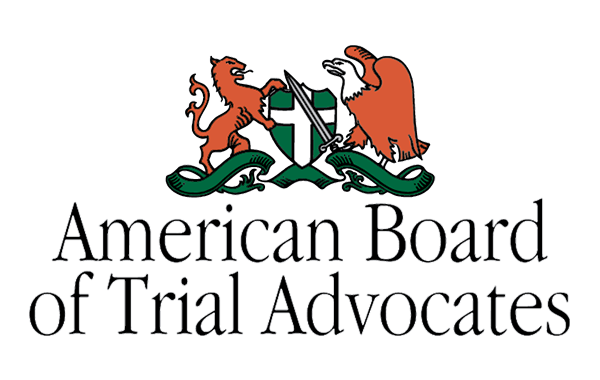Construction sites in Texas are inherently dangerous environments. Workers face numerous hazards daily, from heavy machinery and electrical equipment to high elevations and hazardous materials. Despite stringent safety regulations and precautions, accidents can and do happen. When they do, the consequences can be severe, leading to injuries that may incapacitate workers for extended periods. In such instances, understanding the nuances of third-party claims becomes crucial for affected workers seeking compensation beyond what is offered through traditional workers’ compensation.








The Basics of Third-Party Claims
In Texas, workers’ compensation provides a form of no-fault insurance coverage for workers injured on the job. This means that regardless of who was at fault for the accident, the injured worker is entitled to certain benefits, including medical expenses, lost wages, and rehabilitation costs. However, workers’ compensation often does not cover the full extent of the damages suffered by an injured worker, such as pain and suffering or punitive damages. This is where third-party claims come into play.
A third-party claim arises when someone other than the employer or a co-worker is responsible for the worker’s injuries. For instance, if a subcontractor, equipment manufacturer, or property owner contributed to the accident, the injured worker might have the right to pursue a third-party claim against that entity. These claims are separate from workers’ compensation and can provide additional compensation to cover the broader scope of damages experienced by the worker.

Protecting Your Rights
Determining Liability in Third-Party Claims
Identifying liable parties in a construction accident requires a thorough investigation into the circumstances surrounding the incident. Construction sites typically involve multiple parties, including general contractors, subcontractors, equipment suppliers, and property owners, each with distinct roles and responsibilities. When an accident occurs, determining which party’s negligence led to the injuries is essential for pursuing a third-party claim.
For example, if a worker is injured due to a defective piece of machinery, the manufacturer of that equipment could be held liable. Similarly, if an accident occurs because of unsafe working conditions created by a subcontractor, that subcontractor might be responsible for the injuries sustained. The complexity of construction projects means that liability is often shared among various parties, making it crucial to work with legal professionals who can navigate these intricate details.
Common Scenarios Leading to Third-Party Claims
Several scenarios frequently give rise to third-party claims in construction accidents. Equipment malfunction is a primary example, where defects in machinery or tools can lead to serious injuries. In such cases, the manufacturer or distributor of the equipment might be held liable for failing to ensure the safety of their products.
Another common scenario involves unsafe premises. Property owners and managers have a duty to maintain a safe environment for workers and visitors. If an accident occurs due to hazardous conditions on the property, such as unmarked holes, unstable structures, or exposure to toxic substances, the property owner could be held accountable.
Negligent subcontractors also contribute to third-party claims. Subcontractors hired to perform specific tasks on a construction site must adhere to safety regulations and standards. If their negligence, such as improper scaffolding setup or failure to follow safety protocols, results in an injury, they can be pursued for damages.
The Legal Process for Third-Party Claims
Pursuing a third-party claim involves a legal process distinct from filing for workers’ compensation benefits. It begins with a comprehensive investigation to gather evidence, identify liable parties, and build a strong case. This investigation may include reviewing accident reports, interviewing witnesses, examining safety records, and consulting with safety professionals to establish the cause of the accident and the extent of the injuries.
Once sufficient evidence is collected, a claim is filed against the responsible third party. This initiates the legal proceedings, where both parties will present their arguments and evidence. It is crucial for the injured worker to have legal representation to ensure their rights are protected and to navigate the complexities of the legal system.
The goal of a third-party claim is to secure compensation that adequately reflects the damages suffered by the injured worker. This can include medical expenses, lost wages, loss of earning capacity, pain and suffering, and other related costs. Unlike workers’ compensation, third-party claims can also pursue punitive damages, which are intended to punish the negligent party and deter similar conduct in the future.
Challenges in Third-Party Claims
While third-party claims offer the potential for greater compensation, they also present unique challenges. Establishing liability often requires a higher burden of proof compared to workers’ compensation claims. The injured worker must demonstrate that the third party’s negligence directly caused the injury and that they are responsible for the resulting damages.
Construction accident cases can be particularly complex due to the involvement of multiple parties and overlapping responsibilities. Each party may attempt to shift blame onto others, complicating the process of identifying the true source of negligence. This is why having experienced legal representation is critical in navigating these challenges and building a compelling case.
The Importance of Legal Representation
Given the complexities and potential obstacles in third-party claims, securing experienced legal representation is essential for injured construction workers. A knowledgeable attorney can provide the experience needed to investigate the accident thoroughly, identify liable parties, gather compelling evidence, and advocate for fair compensation.
Legal professionals in construction accidents understand the intricacies of these cases and can navigate the legal system effectively. They are well-versed in the relevant laws and regulations, and they can negotiate with insurance companies and opposing parties. Their goal is to ensure that injured workers receive the full compensation they deserve for their physical, emotional, and financial suffering.
Maximizing Compensation Through Third-Party Claims
One of the primary advantages of third-party claims is the potential for higher compensation compared to workers’ compensation benefits alone. While workers’ compensation covers basic medical expenses and a portion of lost wages, it often falls short in addressing the broader impact of severe injuries.
Third-party claims allow injured workers to seek damages for pain and suffering, emotional distress, loss of enjoyment of life, and other non-economic losses. Additionally, they can pursue punitive damages to hold negligent parties accountable for their actions. This comprehensive approach to compensation ensures that injured workers are not left struggling with the financial and emotional aftermath of a construction accident.
Real-Life Impact of Third-Party Claims
The significance of third-party claims can be illustrated through real-life examples. Consider a construction worker who suffers a life-altering injury due to a defective scaffold provided by a subcontractor. The worker’s injuries may require extensive medical treatment, rehabilitation, and potentially result in permanent disability. Workers’ compensation might cover immediate medical expenses and a portion of lost wages, but it will not address the long-term impact on the worker’s quality of life.
By pursuing a third-party claim against the subcontractor responsible for the defective scaffold, the worker can seek additional compensation for pain and suffering, future medical expenses, and the loss of earning capacity. This additional compensation can make a significant difference in the worker’s ability to cope with the consequences of the accident and secure their financial stability.
Contact Chavez Law Firm Today
Navigating the complexities of third-party claims in Texas construction accidents requires legal representation. The Chavez Law Firm is dedicated to helping injured construction workers understand their rights and pursue the compensation they deserve. With extensive experience in handling construction accident cases, the Chavez Law Firm is committed to advocating for justice and ensuring that negligent parties are held accountable.
If you or a loved one has been injured in a construction accident, it is crucial to seek legal guidance promptly. The Chavez Law Firm can provide the experience and support needed to navigate the legal process, investigate the circumstances of the accident, and build a strong case for compensation. Do not let the complexities of third-party claims deter you from seeking the justice and compensation you deserve. Contact the Chavez Law Firm today to schedule a consultation and take the first step toward securing your future.



